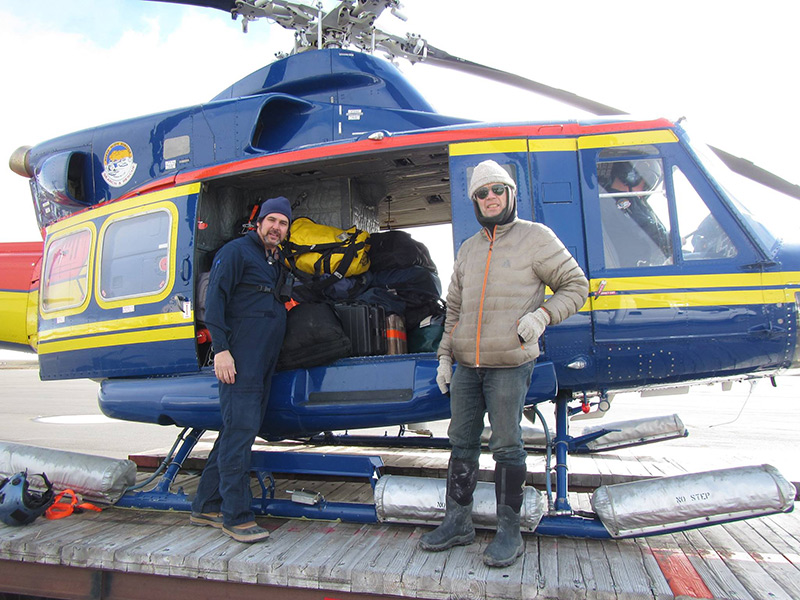
Fieldwork at the Black Guillemot colony on Cooper Island began in early June, where I began the fifth decade of research on a remote island in a rapidly changing Arctic. Just how rapidly that change is occurring was obvious on the first day in the field, June 11, 2015, when I discovered that egg laying had already begun, with the first egg laid some two weeks earlier than the average date of the first egg over the last four decades. The early laying was a direct result of an extremely early snowmelt in Arctic Alaska that provided Black Guillemots access to nest cavities in late May. A future post will have more details on what the unprecedented timing of this breeding season means for the Cooper Island guillemot colony and in the context of the forty years of observations of breeding chronology that precede it.
I discovered that egg laying had already begun, with the first egg laid some two weeks earlier than the average date of the first egg over the last four decades.
While long-term changes in snowmelt are affecting the start of the guillemots’ breeding season, long-term changes in summer sea ice extent have been changing their breeding success at the end of breeding season. Two papers examining how the decadal decreases in sea ice extent have affected the guillemots’ ability to feed their nestlings were included in a special issue of the journal Progress in Oceanography containing papers generated as part of the Synthesis of Arctic Research (SOAR). SOAR is an initiative of the National Oceanic and Atmospheric Administration (NOAA) and the Bureau of Ocean Energy Management (BOEM) and seeks to have researchers collaborate on multidisciplinary analyses utilizing complementary data sets.
Two Recent Publications on Cooper Island Research are Now Available
Effects of recent decreases in arctic sea ice on an ice-associated marine bird
by G.J. Divoky, P.M. Lukacs, and M.L. Druckenmiller
Download the full PDF article
This paper examines how changes in sea ice extent and sea surface temperature have affected Black Guillemot prey availability during the nesting period – comparing a historic (1975-1984) period with a recent one (2003-2012). The graphical abstract below shows how much summer ice has changed over the past four decades. That loss and the concurrent increases in sea surface temperature have reduced availability of Arctic Cod, the guillemots preferred prey, with subsequent decreases in nesting growth and survival. This paper is featured on the Nature Climate Change website.

Change in the Beaufort Sea ecosystem: diverging trends in body condition and/or production in five marine vertebrate species
by L.A. Harwood, T.G Smith, J.C. George, S.J. Sandstrom, W. Walkusz, and G.J. Divoky
Download the full PDF article
This paper is a synthesis of trends in five species in the Beaufort Sea (bowhead whale, Arctic char, ringed seal, beluga and black guillemots). While the first two species appear to be benefiting from recent decrease in sea ice, the others are seeing declines in condition, growth or reproduction. This article is available online for the the Progress in Oceanography Journal.

This summer we hope to post weekly updates from the field on the guillemots’ breeding success, polar bear visits, and the challenges in conducting research on an isolated island. You may want to bookmark this site if you want to follow how the guillemots are doing as our study enters its fifth decade.